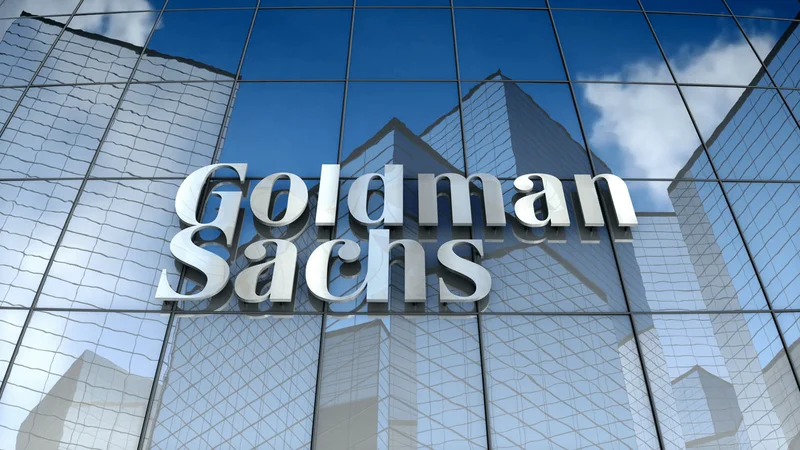Article Directory
Goldman Sachs Just Told You to Buy a Dumpster Fire. Are You Listening?
So, let me get this straight. The high priests of Wall Street, the golden-armored knights of Goldman Sachs, have descended from their glass tower to bestow a "Buy" rating on UnitedHealth. You know, UNH? The company whose stock is down nearly 30% this year, whose CEO just bolted for the exit, and who happens to be the subject of a friendly little probe by the U.S. Department of Justice.
And I’m supposed to take this seriously?
This is the part of the show where the financial media puts on its serious face, with headlines like UnitedHealth Stock (UNH) Scores Goldman Sachs’ Buy Rating, Truist Lifts Price Target, and dutifully reports that Goldman analyst Scott Fidel has "initiated coverage" with a rosy $406 price target. It sounds so official, so… important. You can almost picture the scene: a conference room filled with the low hum of expensive air conditioning, the scent of stale coffee, and a guy in a suit pointing a laser at a chart that goes up and to the right. It's a sacred ritual.
But what they're actually saying, when you strip away the jargon, is this: "Yeah, this thing is a train wreck right now, but we ran a spreadsheet that says it might be less of a train wreck in 2026."
Give me a break. Betting on a "cyclical margin recovery" two years from now is like a weatherman telling you not to worry about the Category 5 hurricane bearing down on your house because he’s forecasting sunny skies for Tuesday. It’s a completely useless piece of information designed to make you feel like someone, somewhere, has a plan. They don’t.
Decoding the Prophet's Scrawl
Let’s dig into the sacred texts, shall we? Fidel’s core thesis is that the managed care industry is in its worst downturn in 15 years, but he sees a recovery on the horizon, particularly in Medicare Advantage. He also mumbles something about UNH’s new management team being ready to "address stakeholder concerns" and implement "more conservative pricing."
Let's translate that from PR-speak into English. "Address stakeholder concerns" means "try to stop the bleeding and get the DOJ off our backs." And "conservative pricing" means "we're going to try and charge more without people noticing." It’s the same playbook every struggling corporate behemoth runs. This isn't some brilliant insight; it's Corporate Turnaround 101.

Then there’s the bit about 78% of UNH’s Medicare Advantage members being in "4+ Star plans" for 2026, which apparently removes a "major short-term overhang." Is it, though? Or is it just a convenient data point the company fed the analyst to make the story sound better? How much of this analysis is genuine, and how much is just a game of telephone between a company's investor relations department and a bank that makes money when people trade stocks? I ain't saying it's a conspiracy, but it sure feels cozy.
The whole thing feels… flimsy. It’s a forecast built on hope and corporate platitudes. Meanwhile, another analyst from Truist is "broadly bullish," talking about "solid free cash flows" and a "brisk opportunity" to deploy capital. It's all just word salad. A bunch of generic, positive-sounding phrases you could apply to literally any large company that isn't actively on fire. And even then, I bet they’d call it an opportunity for "thermal-related asset restructuring."
The Fine Print They Hope You'll Ignore
Here’s the kicker. The part that really sends me. After all this breathless coverage about Goldman’s shiny new "Buy" rating, the fine print tells a completely different story. The average Wall Street price target for UNH stock actually suggests a downside of 2.3%.
Read that again. The consensus among all these geniuses is that the stock is more likely to go down than up. So, Goldman and Truist are the outliers screaming "Buy!" while the rest of the room is quietly shuffling toward the door. This is confusing. No, "confusing" doesn't cover it—this is a casino telling you to bet on Red while the dealer is painting all the numbers black.
It’s a classic Wall Street move. One big, headline-grabbing call from a name like Goldman Sachs Bank gets all the attention, while the contradictory, more realistic data gets buried at the bottom of the article, right above the disclaimer. They know most people won't read that far. They'll just see "Goldman" and "Buy" and think they've found a sure thing.
And let’s not forget the reasons the stock is in the toilet in the first place. High medical costs. An abrupt CEO departure. A federal investigation. These aren't "overhangs." They are fundamental, business-altering problems. You can't just wish them away with a rosy 2026 forecast. That’s not investing; it’s fantasy football.
Then again, maybe I’m the crazy one here. Just some guy yelling at my screen. These are highly paid analysts with access to models and data I can only dream of. Maybe they see the matrix. Or maybe, just maybe, they’re playing a different game entirely—one that has very little to do with whether you, the retail investor, actually make money. Offcourse, that couldn't be it.
It's Your Money, Not Theirs
Here’s the only truth that matters: Goldman Sachs doesn’t lose a single penny if you follow their advice and UNH tanks. They’ve already won. The analyst note generates buzz, the bank's trading desk gets some action, and the whole machine keeps churning. Your potential loss is just a rounding error in their quarterly earnings. They're not your partner; they're the house. And the house always wins. So when they tell you a dumpster fire is a buying opportunity, maybe ask yourself who really stands to get burned.
